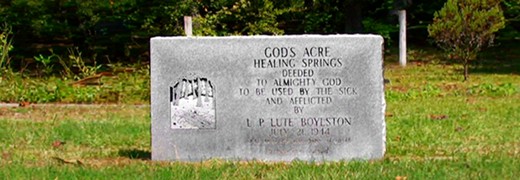God's Acre Healing Springs
About 60 miles South from the state capital of Columbia is a small Mennonite community called Blackville.
God's Acre
Link goes to sciway.net website. (page will open in new tab/window)
is an unusual place located off-the-beaten-path in Barnwell County, South Carolina.  |
 |
| Pipes have been driven into the rock |
The water from the artesian spring is clean and pure, and many of the locals come here regularly to fill jugs. They say it tastes better than the city's tap water. Not having tasted the city's tap-water, I'm unqualified to give a personal comparison, but I can attest that the spring water does taste pretty good.
The history is rather vague and much of it is apocryphal, but the story behind the spring dates back to the Revolutionary War.
 |
| Runoff from the spring |
Military records from the time show that the soldiers returned to Charleston a few weeks later, with all injuries miraculously healed.
 |
| It's called a Black Swallowtail, I'm told. And it's male. I thought it was called a flutterbee. |
The story spread that the water had therapeutic properties or even mystical healing powers which had allowed the wounded troops to regain their health after drinking and bathing in it.
The Edisto Indians reportedly sold the land for a bag of corn, and the Healing Springs Baptist Church was built next door.
The church made the decision to forgo digging a traditional graveyard on the land, in order to keep the springs intact and undisturbed.
The land was owned by L. P. "Lute" Boylston until his death in 1944. In his last will and testament, he bequeathed the land to "God Almighty", ensuring that the water from its spring would always remain free for anyone to drink.
God's Acre is listed in the National Register
God's Acre is listed in the National Register
Healing Springs
Link goes to the Historical Marker Database website (hmdb.org) (page will open in new tab/window)
of Historic Places. 
No comments:
Post a Comment